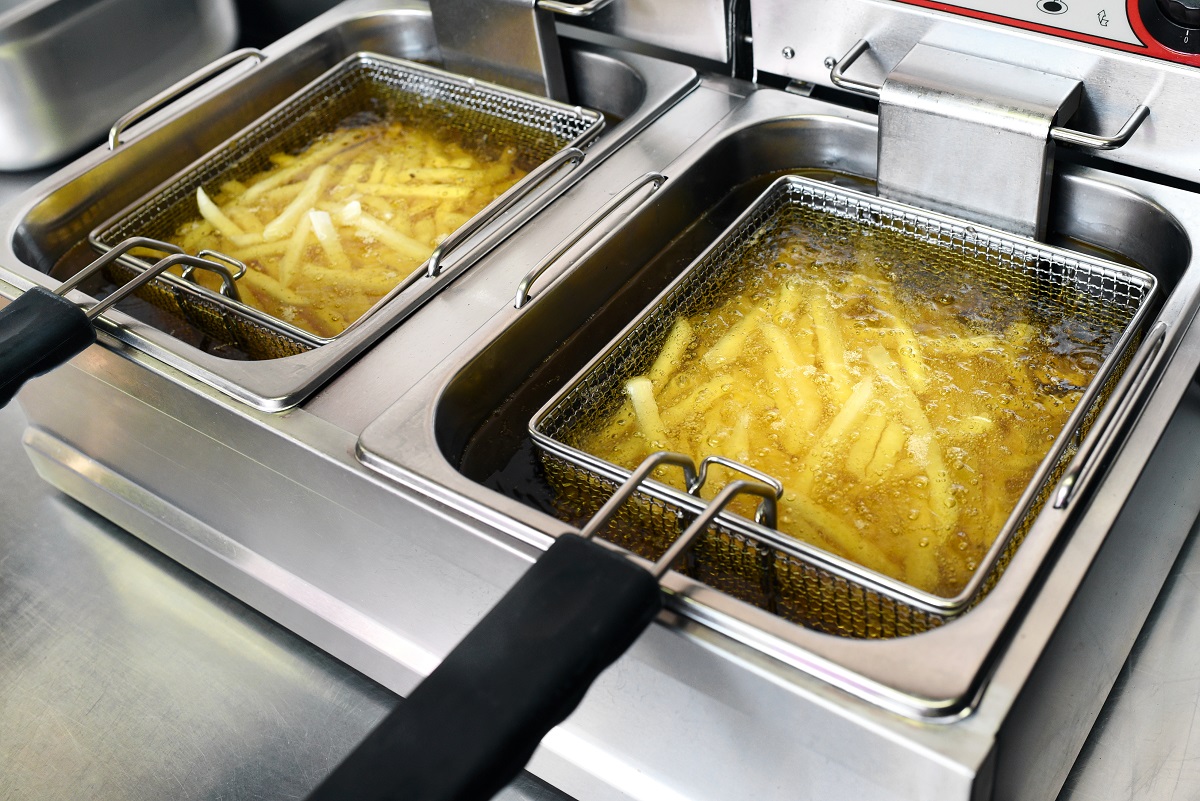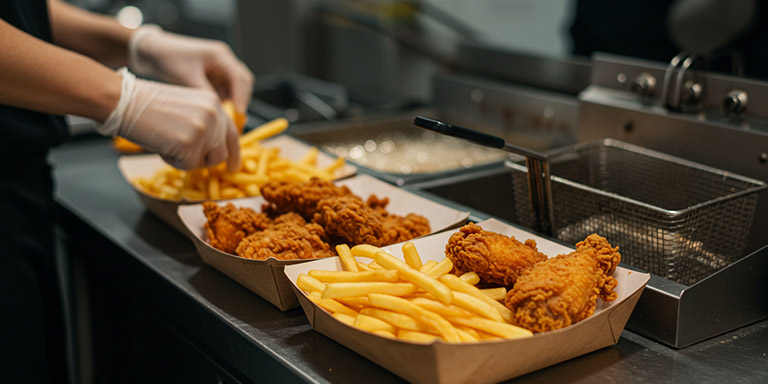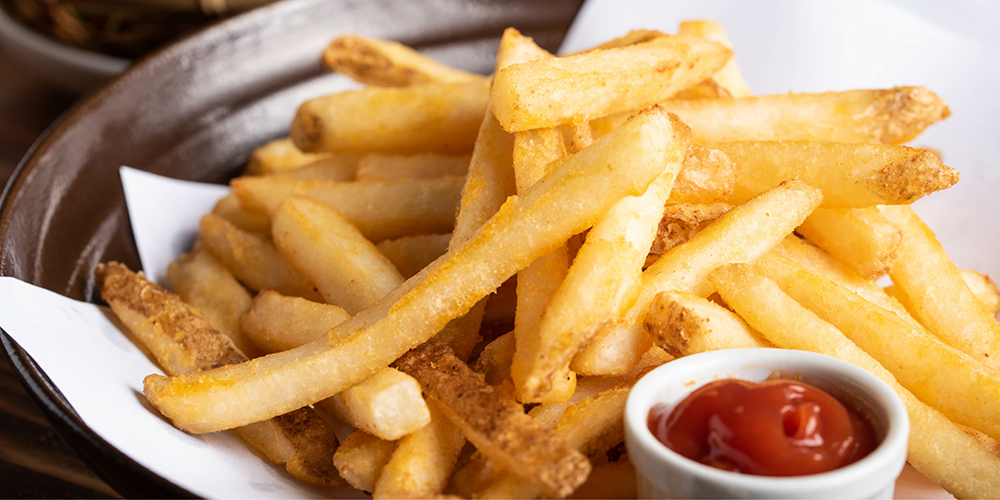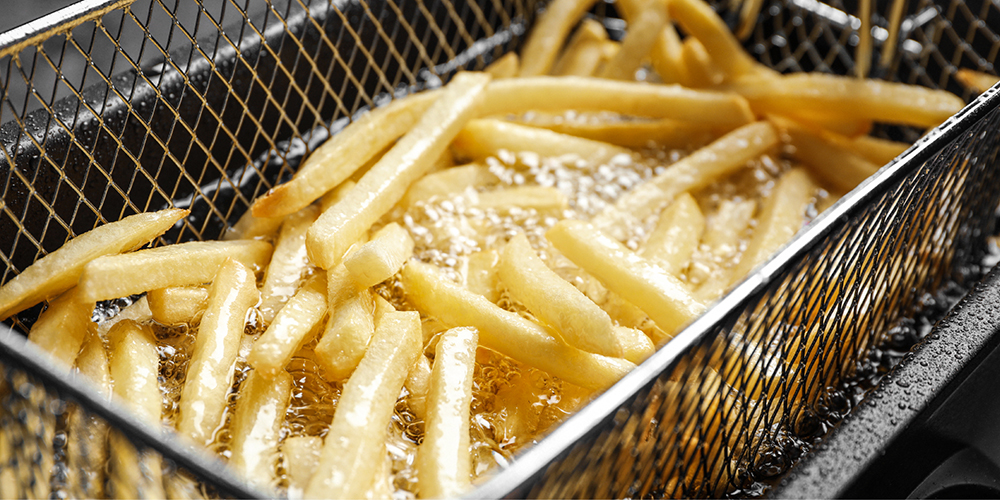Maintaining fryer oil quality is crucial for any restaurant looking to serve great-tasting food and keep costs under control. Fryer oil degrades over time, impacting not only the flavor and texture of the food but also the lifespan of your equipment. Testing and monitoring your fryer oil quality ensures you’re serving top-notch meals while extending the life of your oil, reducing costs, and maintaining compliance with food safety standards. In this post, we’ll explore the importance of fryer oil quality control, various testing methods, and how modern filtration systems can help streamline the process.
Importance of Maintaining Fryer Oil Quality
Fryer oil plays a critical role in food preparation. When oil quality declines, it can affect more than just taste — it can impact food safety, equipment, and your bottom line.
Why Fryer Oil Quality Matters for Food Safety and Taste
The quality of the oil in your fryer is directly tied to the safety and flavor of the food you serve. Fresh, well-maintained frying oil contributes to the desired golden-brown color, crispy texture, and delicious taste of fried foods. As the oil degrades, it absorbs more food particles, moisture, and free fatty acids, which cause it to break down faster. When this happens, your food can take on a burnt or rancid flavor, which diminishes the customer experience.
From a food safety perspective, using poor-quality oil can lead to harmful chemical reactions. For instance, degraded oil contains compounds that can be harmful when ingested in large quantities. Regular oil analysis and testing ensures your oil is within safe limits.

Effects of Poor Oil Quality on Your Equipment and Costs
Poor cooking oil quality doesn’t just impact your food; it also affects your frying equipment and operational costs. As oil breaks down, it produces more carbon buildup, which can clog your fryer and cause it to overheat. This increases wear and tear, leading to costly repairs or even equipment replacement.
Additionally, using oil that isn’t filtered or replaced regularly can result in higher oil consumption. Similarly, it’s important to have a proper plan for how to store used cooking oil. Instead of maximizing the oil’s lifespan, you may find yourself discarding and replacing it prematurely, driving up your operational expenses.
How Do I Check the Quality of My Fryer Oil?
Testing fryer oil is essential for maintaining food quality, equipment health, and operational efficiency. Fortunately, there are several easy ways to assess the quality of your fryer oil.
Visual Indicators of Oil Degradation
One of the easiest ways to monitor your oil is by checking for visual signs of degradation. These signs include:
- Darkening: As oil ages, it absorbs food particles and moisture, causing it to darken. Fresh oil is typically a golden or light amber color, whereas degraded oil turns brown or black. Darkened oil is a sign that the oil has oxidized and should be replaced.
- Foaming: Excessive foaming during the frying process indicates the oil has been compromised by moisture or impurities, making it less effective for frying. Foaming oil can cause inconsistent cooking results and safety hazards.
- Smoking: Fresh oil has a high smoke point, meaning it can withstand high temperatures without producing smoke. If your oil starts smoking at normal frying temperatures, it’s a clear sign that it has broken down and should be discarded.
It’s also important to remember that different types of oil deteriorate at different rates. For example, canola oil shelf life differs from that of coconut oil.
Smell and Taste Tests for Fryer Oil
Another quick and effective way to test fryer oil quality is by conducting smell and taste tests. Fresh oil should have a neutral smell. As oil degrades, it may emit a burnt, rancid, or sour odor, indicating it’s time for a change.
Similarly, tasting the fried food can offer valuable insights. If the food has an off-flavor — often described as metallic, bitter, or stale — it’s a sign that the oil is no longer good. If the taste or smell is compromised, replace the oil immediately to avoid serving subpar food.
Explore Restaurant Technologies’ Fryer Filtration Monitoring Systems
Maintaining fryer oil quality doesn’t have to be a manual, labor-intensive process. Restaurant Technologies offers fryer filtration and monitoring systems that optimize oil management and enhance food quality.
Our fryer filtration monitoring system takes the guesswork out of oil monitoring by providing restaurant operators valuable visibility into the filtration process performed by the back-of-house staff. THe system ensures filtration is being carried out according to standard operating procedures, including providing insights into how often filtration occurs and the duration of each cycle. This helps maintain consistent frying conditions and supports food safety protocols.
How to Test Oil Quality
For a more accurate assessment of your fryer oil, consider using an oil test kit.
Using Oil Test Kits for Accurate Results
Oil test kits are an affordable and straightforward tool for testing oil quality. These kits typically involve a strip or electronic meter that measures the oil’s level of degradation. By dipping the strip into the oil, you’ll get a reading that indicates whether the oil is still good for frying or if it needs to be replaced.
These test kits are easy to use and provide immediate feedback, helping you make informed decisions about oil changes without relying solely on visual or smell indicators.
How Do I Know if My Fryer Oil Is Still Good?
Beyond the initial tests, it’s essential to know how to maintain oil quality over time.
The Role of Filtration in Prolonging Oil Life
Filtering fryer oil regularly is one of the best ways to extend its lifespan. Filtration systems remove food particles and other contaminants, preventing them from breaking down the oil prematurely. Many fryers come equipped with built-in filtration systems, or you can use external filtration units to achieve the same effect.
When it comes to how to filter cooking oil, Restaurant Technologies has you covered. Our oil filtration system helps maintain oil quality by tracking when oil is filtered and the duration of each cycle. This helps restaurant operators to ensure their staff adheres to proper filtration protocols, improving frying consistency, extending oil life, and supporting safety standards.
Frequency of Oil Replacement Based on Usage
The frequency at which you need to replace your fryer oil depends on several factors, including the type of food you fry, how often you use the fryer, and how well you maintain the oil. Restaurants that fry large volumes of food, especially items with heavy batter or breading, will need to replace their oil more frequently.
In general, light-to-moderate use fryers may require an oil change every 3-5 days, while higher-volume kitchens may need to replace oil daily. However, using automated systems for filtration and oil monitoring can extend the lifespan of your oil, allowing you to change it less frequently while still maintaining quality.
How Do You Test Oil for Deep Frying?
For commercial kitchens, deep fryers are an essential piece of equipment. Just as it’s important to know how to clean restaurant hood filters, ensuring the quality of oil in these fryers is crucial for both food quality and safety.
Best Practices for Using Fryers in Commercial Kitchens
To maintain oil quality in deep fryers, follow these best practices:
- Filter the oil twice per day: Regular filtration helps remove food particles and contaminants that degrade oil.
- Maintain consistent frying temperatures: Keeping oil at the recommended temperature prevents overheating, which accelerates oil breakdown.
- Skim food debris: Skim the oil frequently to remove floating food particles, especially during peak service hours.
The Role of An Oil Testing System
An oil testing system, like the one offered by Restaurant Technologies, offers valuable insight into oil quality monitoring in busy commercial kitchens. It helps hold back-of-house staff accountable for adhering to proper filtration schedules and promotes consistency in the frying process.
By investing in an automated oil testing system, you can maximize the life of your fryer oil, reduce waste, and ensure consistently high food quality without additional labor.
Takeaway
Maintaining the quality of your fryer oil is essential for ensuring food safety, flavor, and equipment longevity. With a combination of regular testing, proper filtration, and modern restaurant oil filtration and monitoring technologies like those offered by Restaurant Technologies, you can take the guesswork out of oil management and run a more efficient, cost-effective kitchen.
Sources:
- Henny Penny. “How Should You Be Testing Cooking Oil Quality”. https://www.hennypenny.com/testing-your-oil-quality/
- Filtrox. “Frying Oil Quality Parameters.” https://www.filtrox.com/blog/2022/11/03/frying-oil-quality-parameters/
- Science Direct. “Quality indicators based rapid test kits for detection of frying oil quality: A review”. https://www.sciencedirect.com/science/article/pii/S2772753X23001260
- Industry Kitchens. “How Often Should You Change Fryer Oil Restaurant”. www.industrykitchens.com.au






